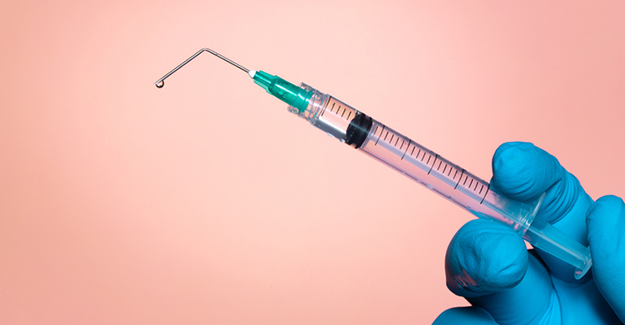Medical errors: Stop blaming the people and start fixing the systems

Rochelle Low, DVM, MaS, MHL, global vice president of patient safety and quality for Mars Veterinary Health, is very passionate about keeping patients safe.
Early in her career, she became involved in medical leadership, which meant she was the one who had to address cases where either a mistake was made by the veterinary team or there was an otherwise adverse outcome for the patient.
Low noticed that, in most cases when an error or adverse outcome happened, the focus was (understandably) on the patient and the client—with very little attention paid to the effects of the incident on the team.
Equally problematic was the tendency to place blame on an individual instead of looking at flaws in the system that increased the risk of negative outcomes in the first place.
Upon realizing this, Low recognized an opportunity for practices to improve how they approach these situations.
System vulnerabilities in vet med
Low emphasizes that the most important thing to do when a mistake or other adverse event occurs is to prevent future problems. This is accomplished not by assigning blame to one individual, but by asking if the problem could happen again. More than 90% of the time, she says, the answer is “Yes.” This begs the question: If it can happen again, how can we change the system so that it doesn’t?
As an example, Low points to the anesthesia machine—specifically, the popoff valve.
There are many risks associated with anesthesia in veterinary patients. One particularly devastating complication is anesthetic death secondary to barotrauma from a closed popoff valve. Low argues that while this is completely avoidable, it is not reasonable to rely only on the human team members to ensure this never happens.
Instead, she says, the vulnerability in the system (a popoff valve that can remain closed indefinitely without human action to open it) is creating a scenario in which the risk of an error is unacceptably high.
[Address this and other anesthesia challenges with the AAHA Anesthesia Certificate.]
There are other examples of system vulnerabilities predisposed to human error with varying severity of consequences when a mistake is made:
- A bag of normal maintenance fluids and a bag of hypertonic saline used to look almost identical. If hypertonic saline were to be accidentally given to a patient as if it were maintenance fluids, the result could be catastrophic if not caught quickly.
- Insulin administration is another area where there is a high risk of error because the prescribed doses are so low and the syringes are different from what is used for practically every other drug in the hospital. Again, an accidental overdose of insulin could be life-threatening.
The fallout on veterinary teams
When a mistake is made or there is an adverse outcome with a patient, Low describes the patient and their family as the “first victims” of the event. The team members involved in making the mistake (if one was made) or those who treated the patient are referred to as the “second victims.”
This language highlights the trauma to the veterinary team that can result, especially if they feel unfairly blamed for making a human error. This can lead to guilt, shame, loss of confidence, burnout, a desire to leave the profession, and other long-lasting negative effects on the individual’s mental health.
Ways to reduce errors
To reduce the risk of medical errors and prevent veterinary team members from continuing a cycle of blame and shame, Low says when system vulnerabilities are identified, every effort should be made to address them.
In the case of the identical fluid bags, the answer was to go to the manufacturer of the hypertonic saline and ask them to change the packaging of their fluids so that it looks very different from other bags of fluids.
In the case of the closed popoff valve on the anesthesia machine, the machine can be retrofitted with a pressure release valve that will automatically reopen if it is ever closed—a feature that is standard in all anesthesia machines for humans, Low adds.
To avoid insulin overdoses, Low suggests implementing a policy of asking another staff member to double-check each dose before administering the drug—a change that Low’s team put in place after the accidental overdose of one of her patients.
Removing the stigma from adverse event reporting
Reporting and tracking adverse events is an important strategy we can borrow from human medicine. Low argues that hospitals need to collect data on mistakes, not to blame anyone, but to identify necessary improvements.
In human medicine, certain events like hospital-borne infections and deaths must be reported so that they can be studied and learned from. This should be true in veterinary medicine as well, she urges. In order for this to happen, however, there must be a culture of psychological safety where individuals don’t fear being blamed or judged if they report an adverse event.
Both addressing systemic vulnerabilities and encouraging reports of medical errors require a shift in mindset from one of individual culpability and acceptance of the status quo to one of shared responsibility and an urgency to seek safer solutions.
“In vet med, we tend to work with what we’ve got, adapt, figure things out, instead of demanding better,” Low says, “Why are we accepting that?”
Further reading
AAHA Anesthesia Certificate
https://www.aaha.org/education/guidelines-certificates/aaha-anesthesia-safety-and-monitoring-guidelines-certificate/
“Veterinary healthcare needs to talk more about error: For the wellbeing of our patients and medical teams.” Journal of Veterinary Internal Medicine
Wiley Online Library
“The Second Victims.” Today’s Veterinary Business
https://todaysveterinarybusiness.com/medical-error-protect-defend-1022/#:~:text=Albert%20Wu%2C%20director%20of%20the,at%2Dfault%20adverse%20medical%20events.
The Institute for Safe Medication Practices
https://www.ismp.org/
Emily Singler, VMD, is AAHA’s Veterinary Content Specialist.
Photo credit: © MarsBars E+ via Getty Images Plus
Disclaimer: The views expressed, and topics discussed, in any NEWStat column or article are intended to inform, educate, or entertain, and do not represent an official position by the American Animal Hospital Association (AAHA) or its Board of Directors.



